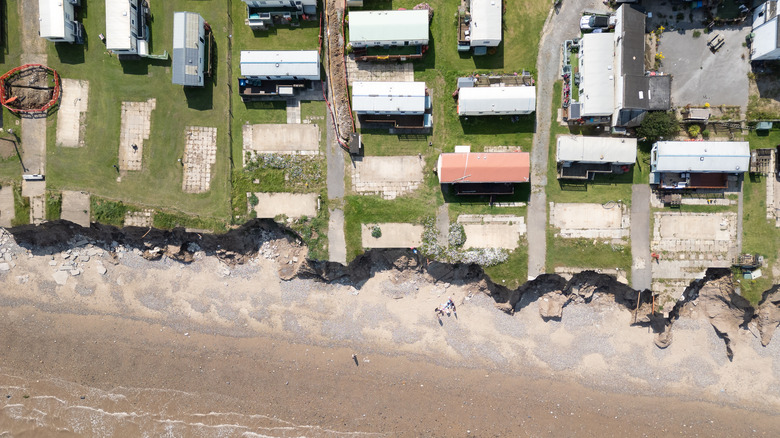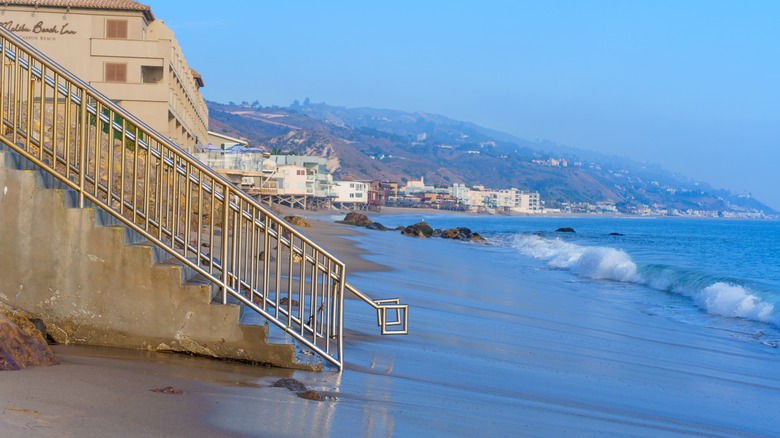
As many of the world's iconic destinations are slowly being destroyed by climate change, nations have to reckon with how they can protect the places they've held dearly, or at least adapt to shifting landscapes. Beaches are some of the environments most affected by this issue. According to the National Oceanic and Atmospheric Administration, the ocean has risen 8 to 9 inches since 1880, and it rose 4 inches just between the years 1993 and 2023, with some coastal areas, like the wildly popular Hawaiian
destination of Oahu, sinking at a more alarming rate than others. As the waters slowly take over existing beaches and push them further inland, a dilemma arises: What should be done about private property as the public shoreline ahead encroaches?
That's where the law that has its roots in the ancient Roman Empire comes into play. In the sixth century A.D., Emperor Justinian of the Roman Empire codified regulations regarding public property. An excerpt of the Justinian law stated that the seashore, along with other natural elements like air and running water, belongs to no one, and it defined what constitutes this public land: "The shore of the sea extends to the point attained by the highest tide in winter."
This rule has been passed down over the centuries, including as a foundation of U.S. law, and most coastal states today consider the beach area below the high-tide line to be public property. The problem is that as the high tide line creeps up due to sea levels rising, the privately owned beach houses that are above that line have to build sea walls or barriers to protect their properties from flooding and damage, which some argue is an infringement on that age-old right to public shoreline access.
Read more: The Best (And Cheapest) West Coast Beach Towns To Visit, According To Travelers
Will Beachfront Homes Squeeze Out The Coast?

As beach houses defend themselves against rising tides, the sandy area of the shoreline cannot move inward, so the beach simply disappears. And there's a domino effect to the phenomenon — when one home puts up barriers, the neighboring homes often follow suit to protect their own properties. The effect is what's known as "coastal squeeze," and its catch-22 was put most succinctly by Richard K. Norton, an urban and regional planning professor at the University of Michigan (via the New York Times): "Are you going to save the beach house, or do you want to save the beach? Because you cannot save them both."
For travelers, the loss of beaches isn't just an environmental or legal concern, but also one of losing part of what makes traveling special: getting to experience the ocean, which has historically been protected as accessible to all. For example, people love coming to the beaches of Malibu, whether for the iconic surfing spots and historic wooden piers, or simply to soak in the sun along the beautiful Pacific, yet, with many wealthy residents living on the coast, it's one of the areas most affected by coastal squeeze. One study from the Journal of Geophysical Research predicts that 31% to 67% of Southern California's beaches will be gone by 2100.
A couple of solutions have been proposed, though none are guaranteed yet. One is called coastal retreat, which involves relocating homes further from the shore, though in some areas, there simply isn't room to do so. Another potential option is to add dunes and kelp to the shore to help limit erosion.
Ready to discover more hidden gems and expert travel tips? Subscribe to our free newsletter for access to the world's best-kept travel secrets.
Read the original article on Islands.












